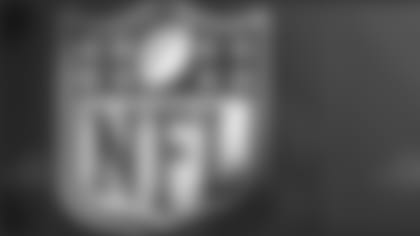NFL fans are not hearing much about football these days. Instead, they are hearing about litigation, mediation, the lockout, the Norris-LaGuardia Act, injunctions, appeals, and stays. - Fortunately, there is time to get back on track. We need to resolve our differences with the players at the bargaining table, start the 2011 season on time, and set a positive course for the future of our great game.
There was no reason for the situation to come to this. The NFL's business model needs to be fixed. Of that, there is no doubt. The 2006 collective bargaining agreement was not balanced. Players have readily acknowledged they "got a great deal." Then the economy went south, adding to the problem. A fair adjustment must be negotiated in a new CBA.
I participated in two of three weeks of federal mediation in Washington. We made progress. We closed the gap on economics, offering to commit almost $20 billion to player costs over the next four years with a 14 percent increase from 2011 to 2014. We addressed other important player concerns in our March 11 offer. It was made in an effort to continue negotiations and reach agreement.
Instead, the NFL Players Association walked away from mediation. It put a litigation strategy in play and filed a lawsuit declaring virtually all league rules relating to player employment as being violations of antitrust law. The union said many times it had no plans to dismantle the core elements of the collectively bargained system that has been in place since 1993.
But starting March 11, those basic elements came under severe attack when NFLPA lawyers declared that the players preferred to pursue antitrust claims rather than exercise their rights under federal labor law.
"There's nothing good at the bargaining table," said NFLPA lawyer Jim Quinn at the April 6 Minnesota district court hearing. "We did it for 2 ½ years. It didn't work out."
The NFLPA's other key outside litigator, Jeff Kessler, said at a conference on March 30 that the NFL Draft is illegal and does not promote competitive balance. In his vision, NFL clubs would have to come up with a system on their own and defend it against inevitable antitrust attacks. "We have every reason to believe that if they are forced to impose a system, it is not going to be one that complies with the antitrust laws," Mr. Kessler said.
The NFLPA lawyers want to wipe away fundamental elements of the NFL's appeal to fans, including the draft, "the Salary Cap, 'franchise player' designation, 'transition player' designation, and/or other player restrictions," according to their lawsuit.
This strategy is no doubt designed to gain economic leverage in negotiations. But it has delayed the process of reaching an agreement and, more importantly, it threatens players, teams, and fans with very negative consequences. Without a CBA, we could be forced, as Mr. Kessler says, to come up with our own system that we think complies with antitrust law, knowing that each and every aspect of it is potentially the subject of years of litigation and uncertainty.
The likely changes would be great for NFLPA lawyers, but not for players, teams, or, most importantly, fans. For example, there could be no league-wide minimum player salaries, with many players making less than they do today, or no minimum team player costs, with many clubs cutting payrolls the way some teams do in other sports. Other bedrock components of the NFL's competitiveness, such as the draft, would be called into question and assailed as antitrust violations. A steroid testing program is a must, so we would have to consider an independent administrator such as WADA. There could be varying player benefit plans from team to team, and limits on the ability to enforce other league-wide rules that benefit players, especially rank-and-file players that do not go to the Pro Bowl.
Even a settlement of the Brady lawsuit, in which the plaintiffs agree to certain rules, could be challenged by other players – now or in the future. The league and individual clubs would likely be hit with a barrage of lawsuits. We could end up with an unregulated system in which a disproportionate amount of money goes to "stars" and where teams in small markets struggle for survival. The very concept of a league with 32 competitive teams would be rendered virtually inoperable.
Before going to work for the Giants, I represented several unions as an attorney for the New York City law firm Shea & Gould. Our firm represented hotel and restaurant workers, building service workers, the Screen Actors Guild, and other unions. Collective bargaining works. Both sides in a labor negotiation have rights under law that guides the parties to compromise and agreement. I observed how it played out in the NFL when my father, Wellington Mara, led the NFL's labor committee decades ago. The NFL's goal then and now was never a work stoppage. We locked out the players this year only after they walked away from negotiations and sued. A strike or lockout is a last resort to force a resolution. Our end-game has always been a balanced collective bargaining agreement that helps us grow and improve the game.
The solution lies at the bargaining table. Everyone should realize what is at stake, especially in this economy. Right now, fans are caught in the middle listening to rhetoric and legalese they don't want to hear. That is why, as ownership and players, we must recognize our shared responsibility as stewards of the game to compromise and reach a fair agreement -- one that highly compensates players, protects their health and safety, ensures the on-field competitiveness of 32 teams, helps retired players, and improves the fan experience and fan value. The best way to get there is to let both sides exercise their labor law rights.
The current ball of confusion needs to become a football season, pronto; the kind of football season that NFL fans have grown to love and that has made our sport so popular.
John Mara is the president and chief executive officer of the New York Giants and a member of the NFL owners' negotiating team for collective bargaining with the players.














